Chrome Canyon: “The Korg PE-1000 is a fantastically quirky synth - they put an oscillator under every single key. That’s insane!”
Chrome Canyon's latest album, Director, is shot through with a nostalgic fascination for vintage synths and '80s sci-fi sound design
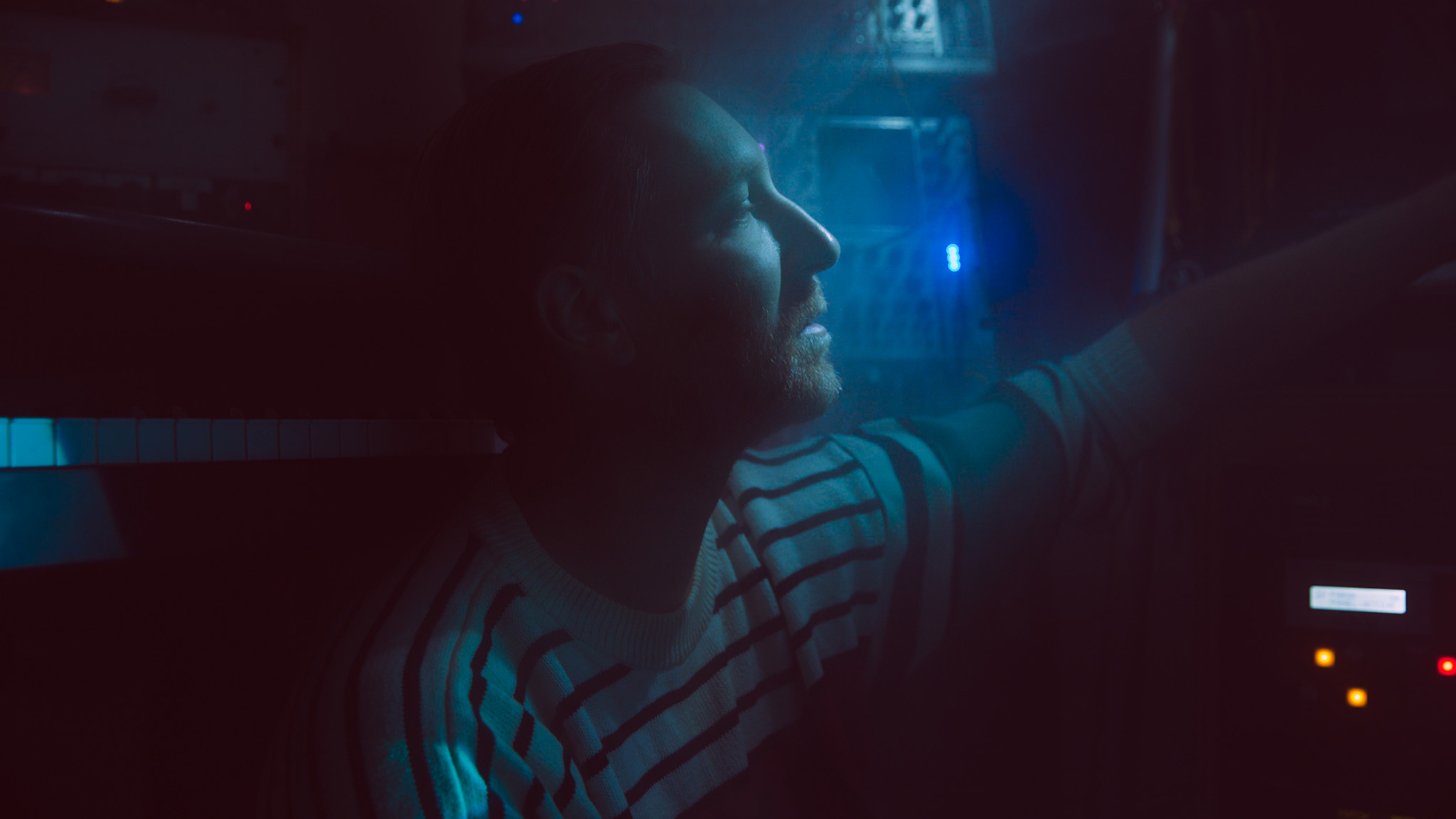
If we didn’t tell you that Morgan Z was a film and TV composer by trade, you could probably figure it out pretty early on in your first listen through Director, the latest release from his solo project, Chrome Canyon.
Positively drenched in cinematic vibes, it takes heavy influence from classic movie scores (think Tron, Blade Runner and Midnight Express) and is shot through with a nostalgic fascination with vintage synths, unique instruments and retro sound design.
This can be heard in the squiggly tones of the PE-1000, an early Korg synth with an individual oscillator under every key, or in the curious sonic hues of the Chroma Polaris, a rare polysynth designed by ARP Instruments but released by Fender/Rhodes after they snapped up the ailing synth brand in the early ‘80s.
Such are the depths of his fondness for this era-specific aesthetic that Morgan even ran the final mixes through a custom-rigged VHS player, taped over a used copy of Spy Kids 2 and sent the audio back into his DAW.
We sat down with Morgan to hear more about the analogue synths, modular gear and inventive production techniques that shaped the sound of Director, his latest album as Chrome Canyon.
When did you start making music, and how did you first get started?
“I started playing piano and was trained classically throughout my childhood. I ended up attending a jazz composition program in college and eventually started collecting analogue synths. I would say the first real keyboard I had besides the piano in high school was when I started sequencing beats on a Yamaha W7, which was a sort of an all-in-one synth/sequencer.
Get the MusicRadar Newsletter
Want all the hottest music and gear news, reviews, deals, features and more, direct to your inbox? Sign up here.
“It had pretty gross sounds but I did a ton with it, and learned a lot about MIDI. Eventually I had it working with Logic - when Logic was still owned by eMagic, before Apple bought it. That was so long ago - now I’m just dating myself and letting people know I’m old! Anyway, it was a steep learning curve, but it really got me into the world of digital music-making and sent me down the road I’m still on today.”
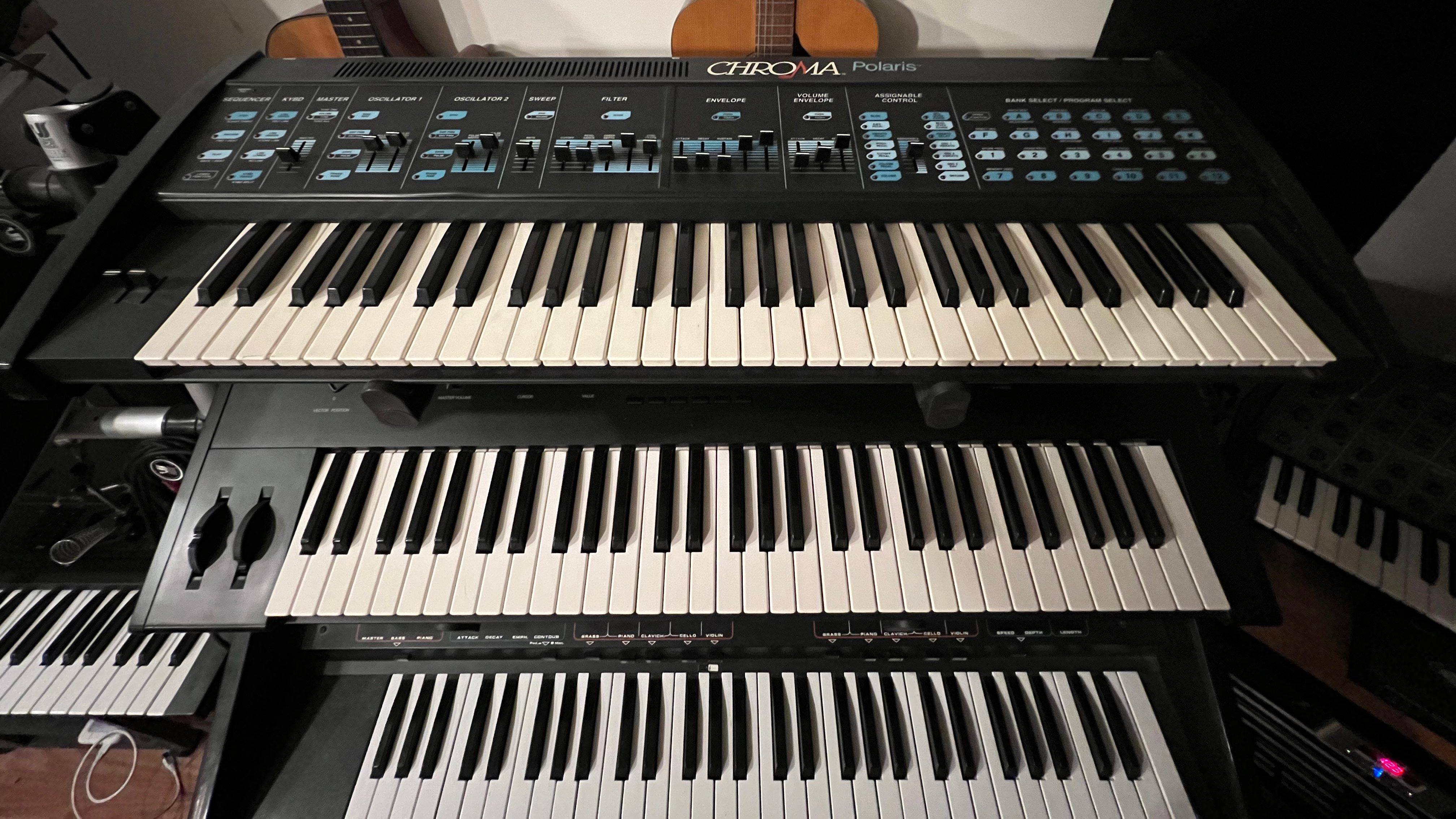
Tell us about your studio/set-up.
“I have a home studio setup that’s in a separate space from my house which is really convenient, although it’s becoming cramped with all the stuff I have crammed in there. I moved a lot of stuff from NY where I had a larger space, and I pared it down to the things I loved most, my synths and the essential outboard gear. I run a very hybrid system.
The Juno-60 and the Crumar Orchestrator - both of those instruments have changed the way I work
“I have some great outboard but it’s a compact setup, so no console or anything like that, just some choice preamps and effects boxes. I find with the amount of composing I’m doing I like keeping my setup streamlined so I end up using quite a bit of in the box stuff - plug-ins and compressors - it’s just faster and easier for me.”
What DAW (or DAWs) do you use, and why did you choose it?
“I use them all. Ableton for most of my composing, Pro Tools for stemming and delivering work, or when I have to do a big session with other musicians or singers, and Logic I use pretty much as a tool to print stuff back onto video at this point.
“I used to use Logic as my main DAW but switched to Ableton a while ago, but Logic still allows for such ease when laying anything onto video, that I normally have all my drafts and revisions in there so I can print them back to video if I’m scoring something.”
What one piece of gear in your studio could you not do without, and why?
“It’d be a hard call between the Juno-60 and the Crumar Orchestrator. I feel like both those instruments have changed the way I work so much. With the Juno, pretty much anything you dial up on it sounds great and there’s so much interesting stuff you can get out of it. But the Orchestrator has an amazing filter, brass preset and a pitch bend that is set up in such a way that it just invites the most expressive beautiful playing. I really couldn’t live without either of them.”

We love the sound of the new record. Could you talk a little more about some of the vintage synths you used on this one, the Korg PE-1000 and Fender Chroma Polaris?
“Those two synths are just wonderful machines which I don’t think get a lot of attention. The Chroma has that classic ARP sound, it’s a fantastically quirky synth and nearly every patch is weird and unexpected, and I really love it for that.
“It’s got some major limitations as well but overall that just adds to its quirkiness. It’s a way of injecting something unusual sounding into a track or drumming up fresh inspiration.”
I actually bought a used version of Spy Kids 2 and taped over the write protection. Then I recorded everything to the tape and played it back into the computer
“The PE-1000 is also a fantastically quirky instrument as well. It is Korg’s early attempt at full polyphony, and so to accomplish that they put an oscillator under every single key of the synth. That’s insane! So you get this crazy synth that needs to be tuned like a piano! You can hear it all over Jean-Michel Jarre and it is very recognizable once you know what it sounds like.
“It can sound massive or very small and delicate. I also like the fact that it's not possible to MIDI-mod it (well, not like other synths of the era… I’m sure someone could figure it out but it would be tough) so it really requires playing - like a Rhodes or something - it’s a real keyboard.”
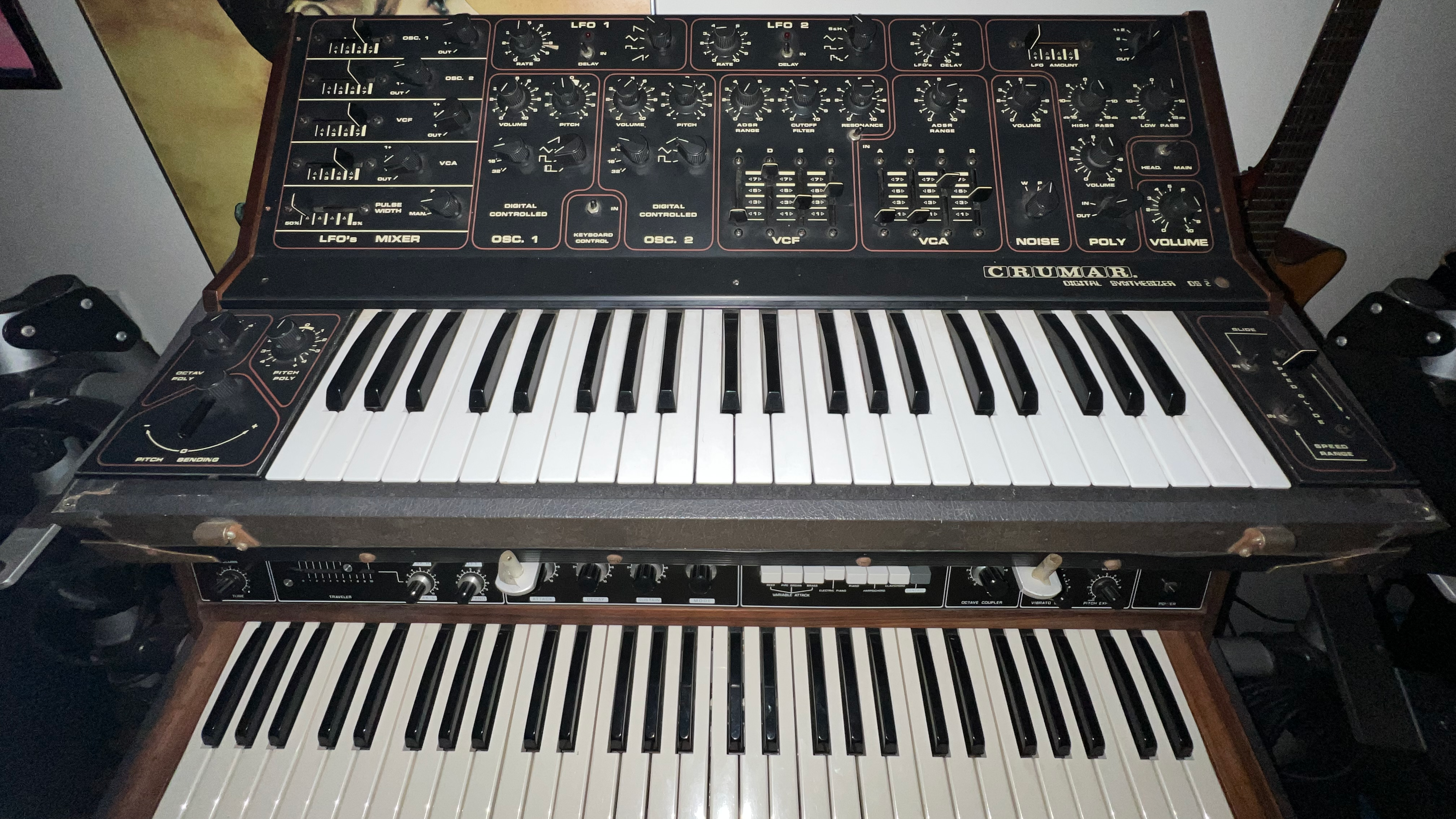
Could you tell us about the VHS recorder you modded to run the tracks through?
“So it’s not really modded, just taken apart a little so I could mess with the playhead while it was recording. I decided I wanted to get the tracks I was working on for the record sounding a little flatter, and maybe have some artifacts in them that would make them sound like they were pulled from a VHS soundtrack.
“I actually bought a used version of Spy Kids 2 (I always wanted to score something with Steve Buscemi, Danny Trejo, and Antonio Banderas…) and I taped over the write protection. Then I recorded everything to the tape and played it back into my Ensoniq DP/4 processor and back out into the computer.
“While it was rolling I would occasionally jam my finger into the playback head and so you can hear some warbles and stuff like that in the music. I also think the ensemble cast of Spy Kids 2 really adds warmth and a presence that otherwise would be hard to get if it was just in the box.”

What's the latest addition to your studio?
“Honestly, the last thing I added to the studio was that $10 VHS and I think the Spy Kids 2 VHS was thrown into the deal for free - which if you ask me was a hell of a bargain, and I got my money's worth for sure. Before that I think the thing that turned my creative world on its head the most would be my dive into the world of modular.
My dream synth is the Yamaha CS-80. Everything I do is based around the sound of that instrument
“I was composing for Infinity Train, which I wanted to have some unique new sounds in, not just the polyphonic analog synths I usually use. So I started piecing together Eurorack stuff and it has been so inspiring to get sucked into.
“I ended up getting a lot of stuff from Mutable Instruments and Make Noise. Intellijel is really amazing too. Most of the percussion and some of the digital sounding sequences and SFX in the Infinity Train soundtrack comes from the modular, and a lot of that stuff made it onto the album as well.”
What dream bit of gear would you love to have in your studio?
“Probably with an unlimited budget, I’d have to say a Yamaha CS-80. It’s just so amazing sounding, and everything I do is sort of based around the sound of that instrument. Maybe someday…”
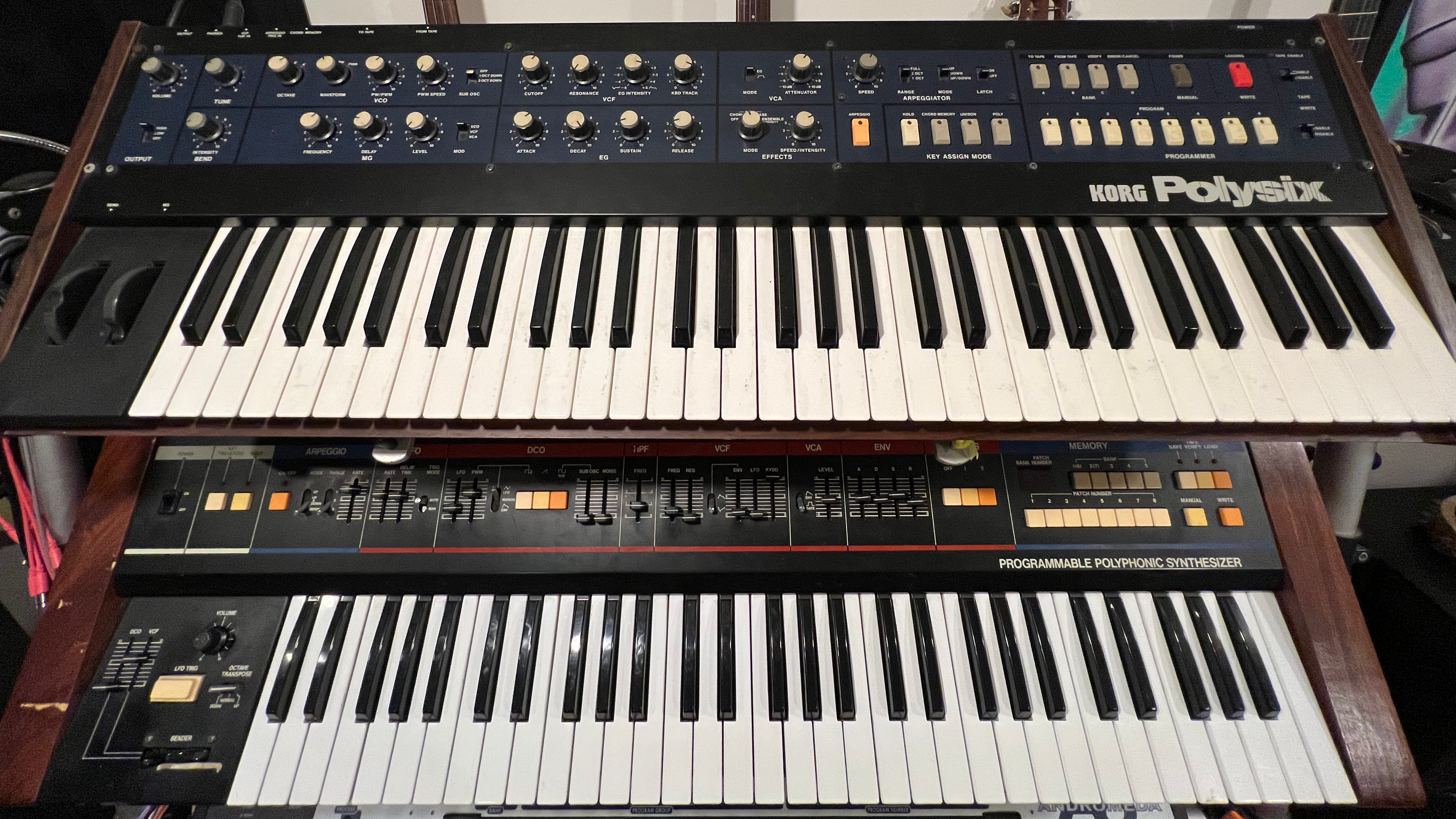
When approaching a new track or project, where do you start?
“Usually I have some idea in my head and it’ll be a chord progression or a bassline - and I try to find a sound I like and put that down. Then I quickly move to drums if it’s a track that requires that. I try to find something that really is inspiring as fast as I can so that I get that boost of inspiration.
“If I have an idea I’ll try to fiddle around until I get an unexpected sound or I make a mistake I like while recording, then use that as the basis for the track. I find that usually helps with getting things rolling and then the rest starts to flow more naturally.”
The music is supposed to be a sort of bed that adds an emotional layer over whatever the listener is doing
What other artists do you look up to for inspiration?
“Oh, tons – there are so many incredible musicians and producers out there today. It’s overwhelming. Sometimes I’ll dive into classics like Brian Eno or David Byrne. I love listening to old John Carpenter scores, because you can tell he wasn’t a trained musician and was letting his instinct drive him, which I love.”
How has your work in making music for film and TV fed into your approach to your own music?
“I think mostly it’s made me comfortable putting out stuff that isn’t necessarily a typically pop structured piece - meaning it might slowly evolve using the same basic loop over 11 minutes, or it might have some strange fractional measures or hits that aren’t necessarily “drops” or typically spaced out the way a dance track would.
“The music is supposed to be a sort of bed that adds an emotional layer over whatever the listener is doing, and so I’m quite happy if it’s the background to something else that is happening while whoever is listening to it.”
For my Ableton friends out there - try Corpus on your kick. It’s life-changing
If you had to pick one track that’s been most influential on your work, what would it be?
“Bach’s Prelude No. 2. I learned to play that around ten years old and it’s still probably subconsciously ingrained in most of the music I write, in terms of the chord changes and the arpeggiated quality.”
What do you think makes you unique as a producer and musician?
“The way I was trained leads me to make use of more music theory and academic composition than you might find in other electronic music. I tend to wish I could spend more time just dialling in a sound or getting something really technologically innovative happening, but I think I rely on the fact that I was brought up playing piano and have a background in theory and composition, so I tend to let that dictate the structure of my writing - maybe not always what I want, but probably what makes it unique.”
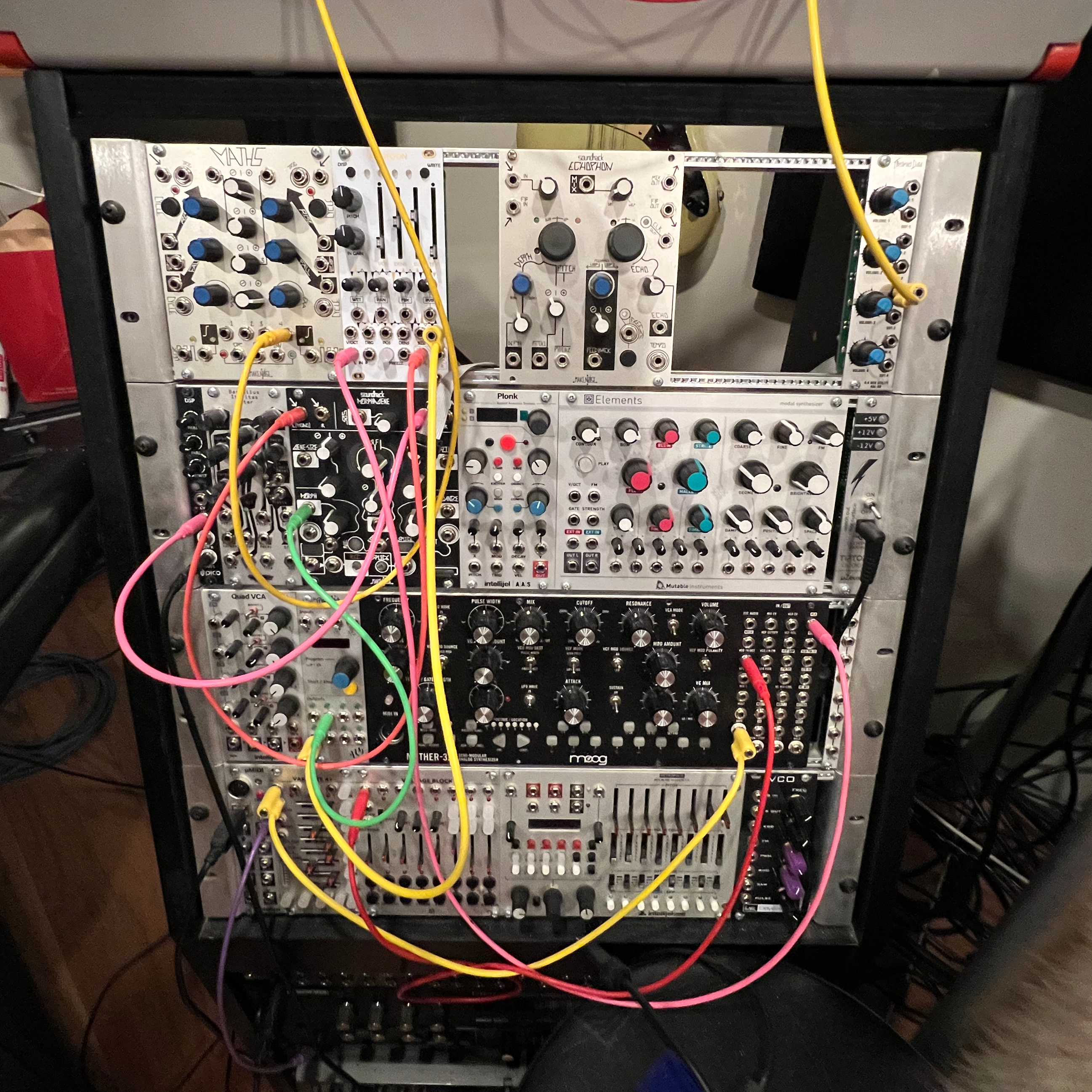
Chrome Canyon's top 3 production tips...
1. Nudge the sidechain
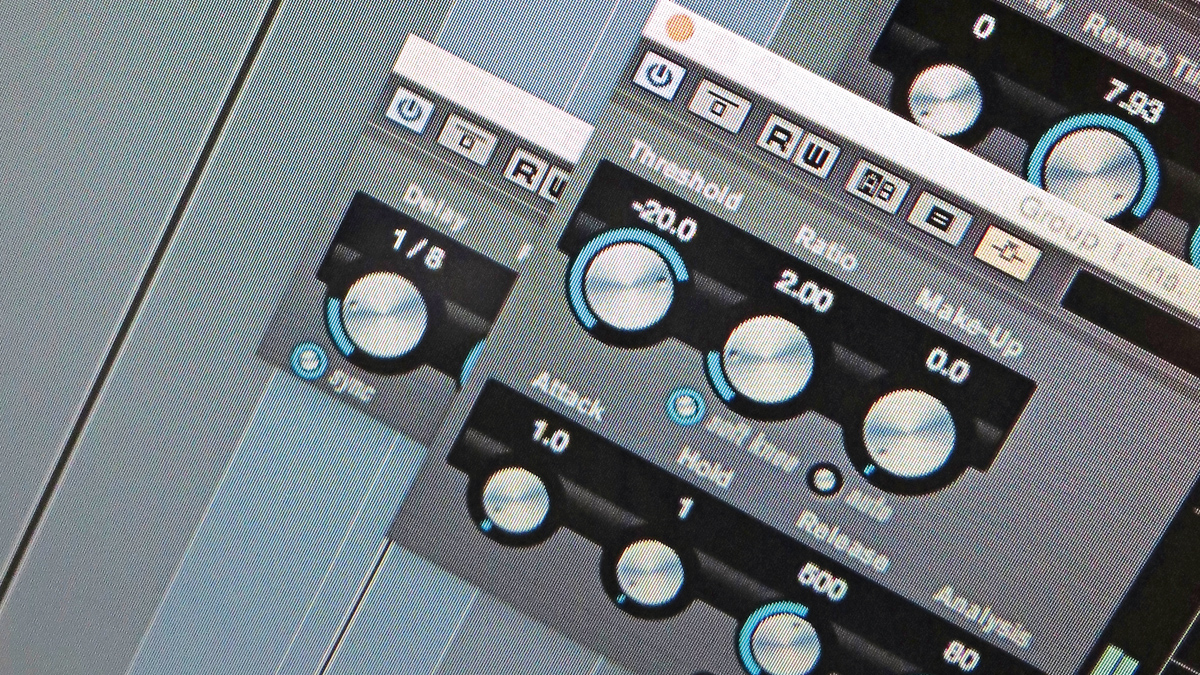
“My all-time best tip, for those of you sidechaining. First you should be using a “ghost” trigger to hit your sidechain (so it’s not coming directly from the kick you have in the mix). That way you can tweak the trigger sound with EQ etc. or use a completely different sound like a snare or clap.
“But here’s the tip! Nudge that trigger sound a few milliseconds in front of the kick you have in the mix (or whatever you’re sidechaining against). That way it gives the compressor time to activate and gets your sidechained track out of the way when the actual sound you want hits. You can play around and it can be subtle or extreme, but I think it also just sounds cooler to have the sidechain ever so slightly off from where your kick actually is. Try it, it's magic!”
2. Cut the lows from reverb and delay
“Pretty common knowledge, but cut the lows out of your reverb and delay sends or inserts. I typically cut from 300hz down unless there’s a specific reason I’m using a reverb for sound design and want it to rumble. But typically you don’t need it and it really gets in the way of a mix.
“Whenever I am mixing and can’t figure out why there’s just a muddled hectic quality to what I’m hearing I’ll find I have a reverb send that is rumbling out the lows and not allowing any space. And you don’t even hear it, it just messes with everything else - so get it out of there!”
3. Use a resonator on your kick drums
“For my Ableton friends out there - try Corpus on your kick. It’s life-changing. This goes for cinematic kicks, house, hip-hop or whatever you’re up to. Here’s the settings I use. Change the resonator type to Membrane (like a drum head). Usually I’ll set it to Basic, which has the least overtones and is lighter on the processor.
“Use the transpose to get the resonator down to the root of the key you’re in (so if you’re in C, it would be on C1 or something like that). Mess with the decay and material knobs to get a nice big hit and you can adjust it to be tight or have a long tail, whatever suits the track.
“Usually I only add about 5% or less to a mix, and it’s crazy how it beefs up the low end of a kick. I do a lot of cinematic stuff and sometimes big orchestral drums don’t have a lot of low-end presence in them, even if they have great mids and attacking highs. Using the resonator is always a game-changer for making the mixes sound huge.”
Chrome Canyon’s new album, Director, is out now on Stones Throw.



I'm MusicRadar's Tech Editor, working across everything from product news and gear-focused features to artist interviews and tech tutorials. I love electronic music and I'm perpetually fascinated by the tools we use to make it. When I'm not behind my laptop keyboard, you'll probably find me behind a MIDI keyboard, carefully crafting the beginnings of another project that I'll ultimately abandon to the creative graveyard that is my overstuffed hard drive.
“Excels at unique modulated timbres, atonal drones and microtonal sequences that reinvent themselves each time you dare to touch the synth”: Soma Laboratories Lyra-4 review
“A superb-sounding and well thought-out pro-end keyboard”: Roland V-Stage 88 & 76-note keyboards review









